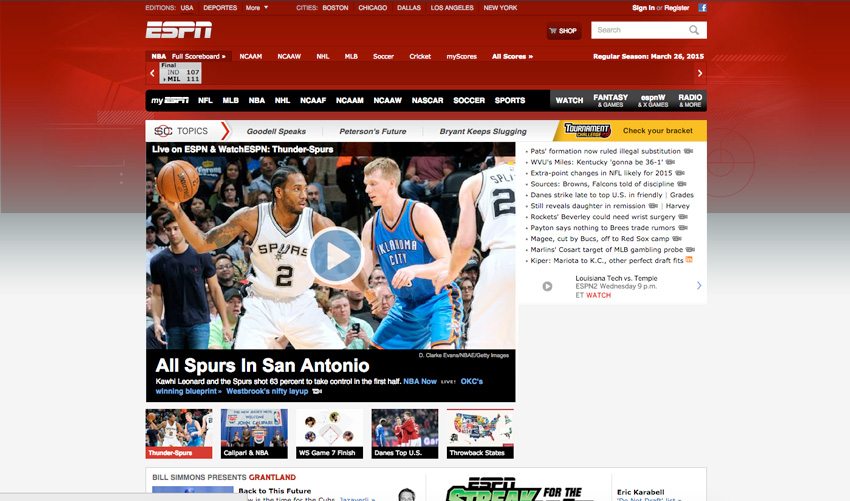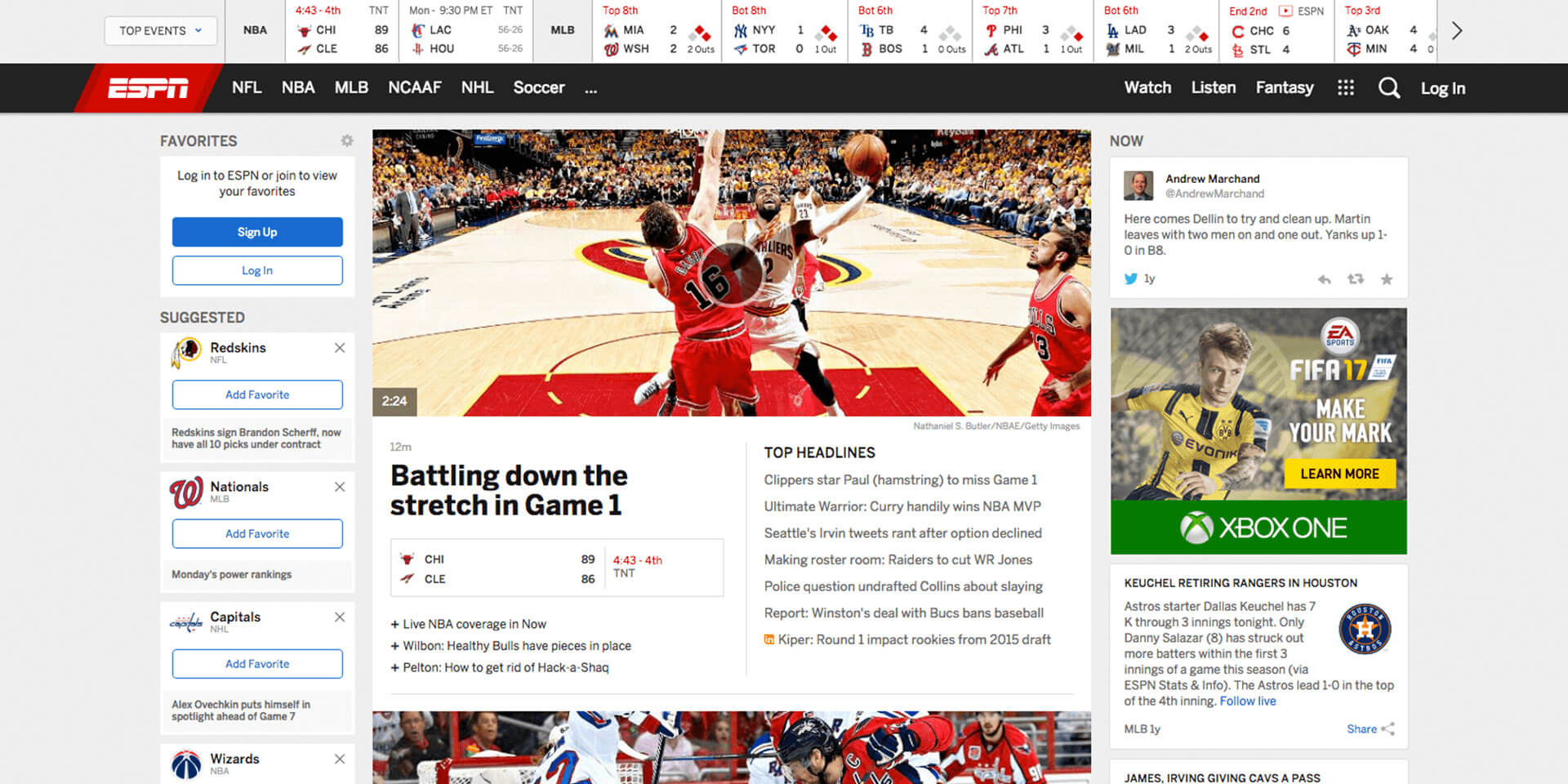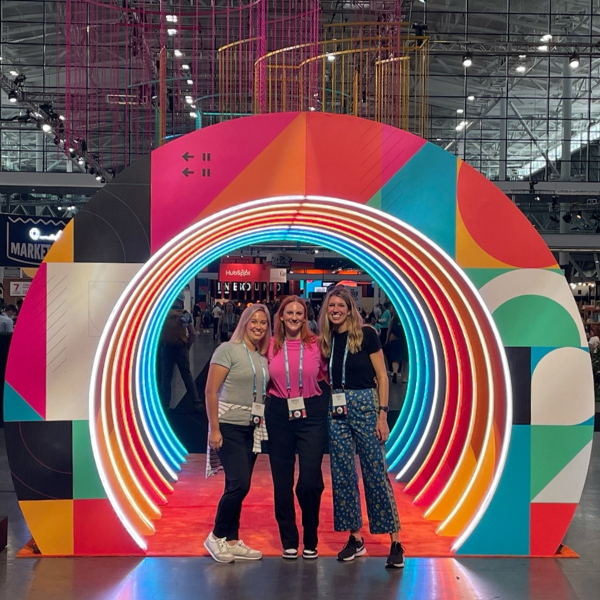Redesigning one of the most trafficked sites on the web is a daunting task. In 2014, ESPN.com had 22 million daily visitors, making it a traffic juggernaut. So when I saw the new design for ESPN.com last month, I have to say I was a little underwhelmed.
While visitors hoping for a unique or innovative experience will be sadly disappointed, everything doesn’t have to be revolutionary to be great. I’ve spent some time evaluating the new site and here are a few of my takeaways:
CATCHING UP ON RESPONSIVE
Most companies redesign their websites every 2 years or so; the last time ESPN did a major redesign was in 2009. That was a very different time for the web—there was no concept of responsive layouts and iOS and Android were fighting for dominance of the mobile platform.

Image by ESPN via Wayback Machine.
Today’s ESPN redesign unifies the mobile and desktop versions under a single responsive architecture. It should be noted that they’ve spent the time to ensure that the user experience for each major responsive layout has been optimized. For example, on the homepage, the standard convention when reducing to a mobile viewport size is to simply stack each column atop the other, creating a fairly tall page. Instead, ESPN offers tabbing controls so users can quickly access the content and present it in a manner that is more space efficient.
A FOCUS ON PERSONALIZATION
Whether searching content or products, people often follow predictable processes for finding, evaluating, and narrowing their options. If you understand your audience’s journey, you can personalize their web experience to serve up the right content at the right time. E-commerce sites like Amazon have been at the forefront of personalization for years, and ESPN.com is applying some of those best practices to their own site experience.
When you first arrive at the site, local teams automatically populate the page based on your geo-location. When you sign in you get a robust set of controls to set your preferences on teams, location and even the devices you use. Now the site can prioritize relevant content on subsequent visits, immediately engaging the user. It also opens the door for advertisers to serve ads that are more relevant to you.
KEEPING YOUR ATTENTION
“Time on site” has become the preferred metric for advertisers deciding where to spend their ad dollars. Personalization is a great way to ensure visitors get the content they want, but how do you make it easier to consume more content if the visitor eschews taking the time to personalize? The infinite scroll.
TIME Magazine, The Los Angeles Times, Quartz, to name a few, are doing it. Content creators have fully embraced this UI convention of serving one article after another. Once you get to an article level page on ESPN.com, the user is presented with a list of article titles on the left column, and the actual article content on the right. As you scroll down, the next article in the progression is seamlessly loaded, simultaneously updating the URL and the associated ad unit displayed. This does two things: 1) it simplifies the user experience so you can keep reading if the next article interests you and 2) presents alternatives through the persistent article list and related content if you are not. All of these tactics help to keep eyeballs on the site longer, which is what content creators need for their business.
Today, all of the above are table stakes in creating an intuitive, seamless user experience. As with any site that has such a strong and diverse readership, any departure from their previous website will undoubtedly generate criticism from vocal users resistant to change. ESPN took a safe approach aligning their new website with current best practices, but in so doing missed an opportunity to use their influence to bring new ideas to the online experience.






